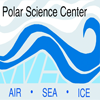
|
Monica Orellana Research Scientist/Engineer - Principal & Principal Oceanographer morellan@uw.edu Phone 206-685-5422 |
Education
B.S. Biology, Concepcion (Chile), 1980
M.S. Biological Oceanography, University of Washington, 1985
Ph. D. Biological Oceanography, University of Washington, 1990
Videos
|
Extreme Summer Melt: Assessing the Habitability and Physical Structure of Rotting First-year Arctic Sea Ice Sea ice cover in the Arctic during summer is shrinking and thinning. The melt season is lengthening and the prevalence of "rotten" sea ice is increasing. |
More Info |
30 Jul 2015
|
|||||||
|
A multidisciplinary team of researchers is making a series of three monthly (May, June, and July) expeditions to Barrow, AK. They are measuring the summertime melt processes that transform the physical properties of sea ice, which in turn transform the biological and chemical properties of the ice habitat. |
|||||||||
|
Publications |
2000-present and while at APL-UW |
Metaproteomic analysis decodes trophic interactions of microorganisms in the dark ocean Zhao, Z., C. Amano, T. Reinthaler, F. Baltar, M.V. Orellana, and G.J. Herndl, "Metaproteomic analysis decodes trophic interactions of microorganisms in the dark ocean," Nat. Commun., 15, doi:10.1038/s41467-024-50867-z, 2024. |
More Info |
30 Jul 2024 |
|||||||
|
Proteins in the open ocean represent a significant source of organic matter, and their profiles reflect the metabolic activities of marine microorganisms. Here, by analyzing metaproteomic samples collected from the Pacific, Atlantic and Southern Ocean, we reveal size-fractionated patterns of the structure and function of the marine microbiota protein pool in the water column, particularly in the dark ocean (>200 m). Zooplankton proteins contributed three times more than algal proteins to the deep-sea community metaproteome. Gammaproteobacteria exhibited high metabolic activity in the deep-sea, contributing up to 30% of bacterial proteins. Close virus-host interactions of this taxon might explain the dominance of gammaproteobacterial proteins in the dissolved fraction. A high urease expression in nitrifiers suggested links between their dark carbon fixation and zooplankton urea production. In summary, our results uncover the taxonomic contribution of the microbiota to the oceanic protein pool, revealing protein fluxes from particles to the dissolved organic matter pool. |
|||||||||
Substrate uptake patterns shape niche separation in marine prokaryotic microbiome Zhao, Z., C. Amano, T. Reinthaler, M.V. Orellana, and G.J. Herndl, "Substrate uptake patterns shape niche separation in marine prokaryotic microbiome," Sci. Adv., 10, doi:10.1126/sciadv.adn5143, 2024. |
More Info |
15 May 2024 |
|||||||
|
Marine heterotrophic prokaryotes primarily take up ambient substrates using transporters. The patterns of transporters targeting particular substrates shape the ecological role of heterotrophic prokaryotes in marine organic matter cycles. Here, we report a size-fractionated pattern in the expression of prokaryotic transporters throughout the oceanic water column due to taxonomic variations, revealed by a multi-"omics" approach targeting ATP-binding cassette (ABC) transporters and TonB-dependent transporters (TBDTs). Substrate specificity analyses showed that marine SAR11, Rhodobacterales, and Oceanospirillales use ABC transporters to take up organic nitrogenous compounds in the free-living fraction, while Alteromonadales, Bacteroidetes, and Sphingomonadales use TBDTs for carbon-rich organic matter and metal chelates on particles. The expression of transporter proteins also supports distinct lifestyles of deep-sea prokaryotes. Our results suggest that transporter divergency in organic matter assimilation reflects a pronounced niche separation in the prokaryote-mediated organic matter cycles. |
|||||||||
Marine polymer-gels' relevance in the atmosphere as aerosols and CCN Orellana, M.V., D.A. Hansell, P.A. Matar, and C. Leck, "Marine polymer-gels' relevance in the atmosphere as aerosols and CCN," Gels, 7, doi:10.3390/gels7040185, 2021. |
More Info |
1 Dec 2021 |
|||||||
|
Marine polymer gels play a critical role in regulating ocean basin scale biogeochemical dynamics. This brief review introduces the crucial role of marine gels as a source of aerosol particles and cloud condensation nuclei (CCN) in cloud formation processes, emphasizing Arctic marine microgels. We review the gel's composition and relation to aerosols, their emergent properties, and physico-chemical processes that explain their change in size spectra, specifically in relation to aerosols and CCN. Understanding organic aerosols and CCN in this context provides clear benefits to quantifying the role of marine nanogel/microgel in microphysical processes leading to cloud formation. This review emphasizes the DOC-marine gel/aerosolized gel-cloud link, critical to developing accurate climate models. |
|||||||||






